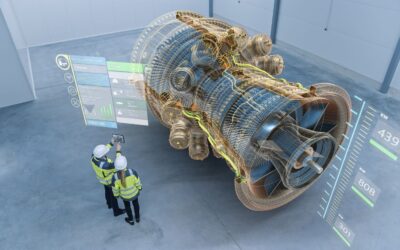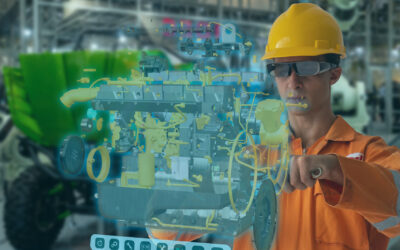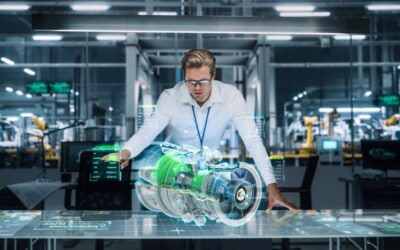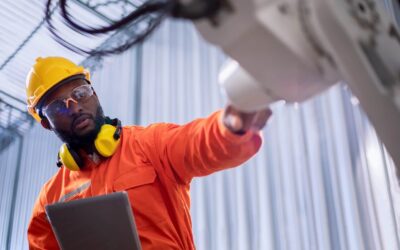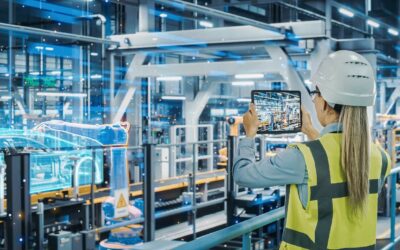Original post on Industrial Innovation (The Frontier Hub)
Driven by the urgent need to address climate change, the adoption of the UN’s Sustainable Development Goals (SDGs), and the rapid rise of Environmental, Environmental Social and Governance (ESG) standards for measurement, companies in the clean energy industry are some of the most prominent players in the sustainability world and are growing as they continue to replace fossil fuels, traditional nuclear reactors and other legacy sources of electricity.
While many are pointing to both SDGs and ESG as “buzz words,” a study by Ernst & Young LLP on the business relevance of sustainability and ESG initiatives revealed that, based on responses from the C-suite across several Fortune 1000 companies, “ESG is still very much in the sights of American executives and at the top of every agenda.”
EY’s Sustainability & ESG Trends Index targeted more than 500 C-suite leaders and members of executive management at US organizations with revenues of $1.5 billion or more. Researchers asked questions related to one overarching issue: how important are sustainability and ESG in business today?
“The overwhelming and definitive response: very,” EY said. “From our survey, every single respondent indicated sustainability and environmental, social and governance (ESG) issues are important to their organization, with 87 percent believing those initiatives are very to extremely important to their businesses and long-term success.”
As enterprises race to decarbonize and meet net-zero emissions goals, including those in the renewable energy industry, are turning to edge AI as part of the need to manage distributed energy resources, including EVs, smart home systems, solar panels, wind farms, thermal and other infrastructure elements to enhance power grid resiliency and accelerate the transition to cleaner power sources.
“Networks need to keep up,” said Jeff Li, Senior Director of Strategy, Risk, Governance, Projects, and Partners at ConnX, a managed service provider serving hundreds of large enterprises by simplifying business connectivity, collaboration, security, and service assurance. “In our support of next-generation energy companies, we are seeing a surge of interest in edge connectivity that is able to not only collect data in real-time but to compute, analyze and act upon that data, which can also be transmitted to centralized computing resources in the cloud. Energy companies cannot manage what they cannot measure and are investing in digital transformation, especially in their local and wide area networking infrastructure.”
Li, who is a true believer in the opportunity to reverse the effects of climate change when tech companies collaborate to bring together broadband connectivity (including 5G wireless and private networking), edge devices (sensors, actuators, gateways included), data collection and management, cyber security solutions that protect physical and digital assets, and cloud-native “operating systems” noted that one of their customers (one of the largest sustainable electricity companies in the world) invested early on in intelligent networking supporting everything from voice and video collaboration to contact center operations.
“Without AI in the network and especially at the edge, and without a depth of automation and active service assurance, managing increasingly distributed and multi-purpose digital networks would be impossible,” Li said. “What’s been great for our team is that the leaders who decide to build and grow next-generation electricity generation and distribution systems are, by definition, aware of the power of software and AI to power their own businesses. It has not been difficult to convey the value of granular control that makes predictability possible to the engineering minds who are revolutionizing the energy grid. They understand how next-next communications networks need to function in our hyper-connected world.”
Li listed several use cases underway, including software-defined smart grids with advanced smart meters that will use edge computing to optimize power flow, detect potential problems, deliver more reliable energy at a lower cost, and increase grid resiliency, decarbonization, and consumer value.
“Autonomous operations are happening everywhere today, including at industrial sites, such as oil rigs and power plants, which require extensive monitoring for efficiency and safety because liquid, steam, or oil leakages can be catastrophic,” Li said. “Our energy customers are using AI and machine learning to build more autonomous power plants, for example, training AI models using thousands of images and video streams from millions of onsite cameras and sensors to monitor and better manage their infrastructure. This is no different from what we deliver to them in parallel – intelligent voice, video, data, and collaboration networks in real-time that are also improved with software solutions from our partners, including Juniper Networks and Nectar Service Corporation.”
Li also listed pipeline maintenance, optimization, and power grid upkeep, including utility pole inspections using connected cameras (replacing manual inspections). “There are an estimated 185 million utility poles in the U.S., and utilities are required to track, maintain, and report on their condition, which costs hundreds of millions of dollars spent each year – the cost savings are both obvious and significant.”
NextEra Energy last year announced it created the Zero Carbon Blueprint, a comprehensive plan to significantly increase renewable energy deployment and lead the $4 trillion market opportunity to decarbonize the U.S. economy, a move Li greatly admires.
“Their plan is to generate only carbon-emissions-free energy from a diverse mix of wind, solar, battery storage, nuclear, green hydrogen, and other renewable sources,” Li said, “and intelligent communications networks will help them understand and automate across the board.”
Economic studies indicate that reaching NextEra Energy’s Real Zero goal could create up to 150,000 jobs and add $15 billion to the annual gross domestic product (GDP) in Florida, where the company is based, through 2045.
The company has developed the Zero Carbon Blueprint, a comprehensive carbon-emissions-reduction plan, to outline the steps it would need to take to achieve its goals and track its progress. The plan would result in NextEra Energy decarbonizing itself, while leveraging its considerable scale and expertise to help its power sector and commercial and industrial customers reduce and, ultimately, eliminate carbon emissions from their own operations. The company intends to help lead the decarbonization of the U.S. economy, a more than $4 trillion market opportunity, by significantly increasing low-cost renewable energy deployment.
“Our Real Zero goal to eliminate carbon emissions from our operations is a real goal that would make a significant difference for our customers,” said John Ketchum, president, and chief executive officer, of NextEra Energy.
“We are building on our decades of innovation and investments in low-cost renewable energy to decarbonize our company while keeping bills affordable for our customers. Attaining Real Zero will be one of those achievements that provide lasting value to our customers and the communities where we do business. We’ve been working on this for a long time and will take our extensive experience, industry-leading development platform, and scale to help accelerate the decarbonization of the U.S. economy.”
“This is a perfect example of a program that supports both the UN’s SDGs and is in lock-step with the rapid evolution of ESG,” Li said. “We are seeing huge demand for connectivity solutions that support SDG programs, including gathering the data required to report on progress. With intelligence at the edge and analytics in the cloud, energy companies can automatically document their progress against their goals, communicating that to shareholders, customers, partners, and regulatory agencies. None of this would have been possible without AI and machine learning and without more reliable broadband and edge networking for computational purposes. Smarter grids combined with smarter networks lead to the kinds of autonomous systems that are required if we are truly serious about getting to Net-Zero in the next few decades and cleaning up our planet and communities.”




